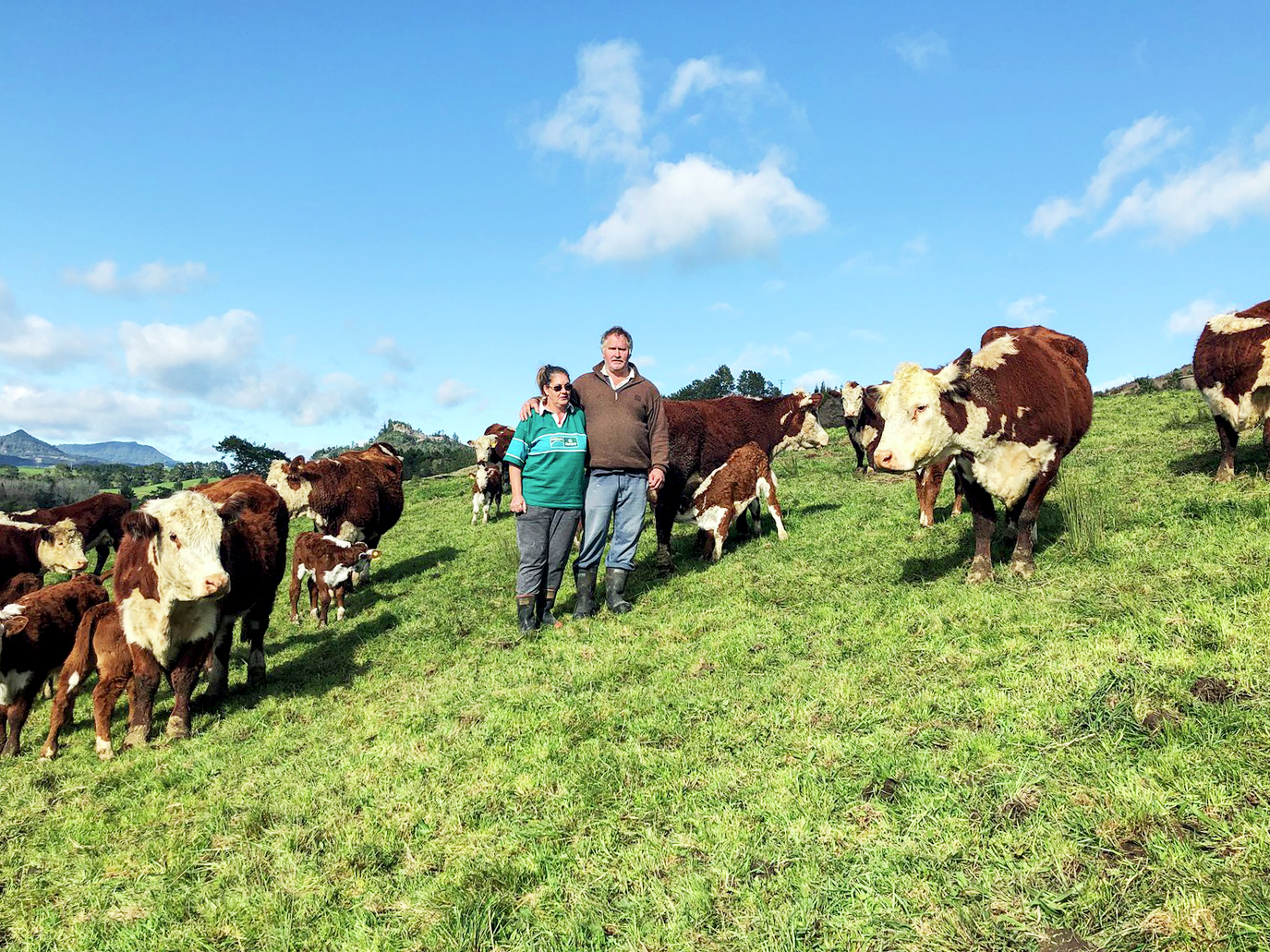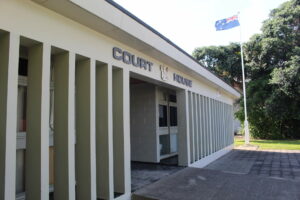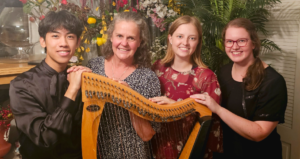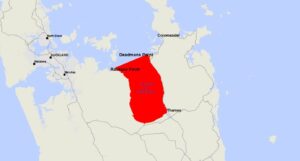Two freak accidents took Bryce Hooton’s sight when he was a teenager, but that hasn’t stopped him from decades of beekeeping followed by hereford cattle farming. DAVIDDA HIKATANGATA finds out more
If Bryce Hooton’s got “too much” to do on the farm – the electric fence gets turned off.
The Coroglen hereford cattle farmer told The Profile he hated electric shocks.
Bryce relies on his fences to navigate the farm, and for good reason too: he’s 100 per cent blind.
Bryce, 57, said while only a small percentage of people were totally blind – “I’m one of those [people]”.
“A lot of people think because of what I do and what I get up to, they all think I can see something,” he said. But when he was out walking on the farm – he used a stick to find his way – “I’ve got to sort of bang it along the fence line”.
The direction of wind also helped him get around the farm, he said.
“If you know you’re going to walk across the paddock and the wind’s in your face, you keep it in your face.”
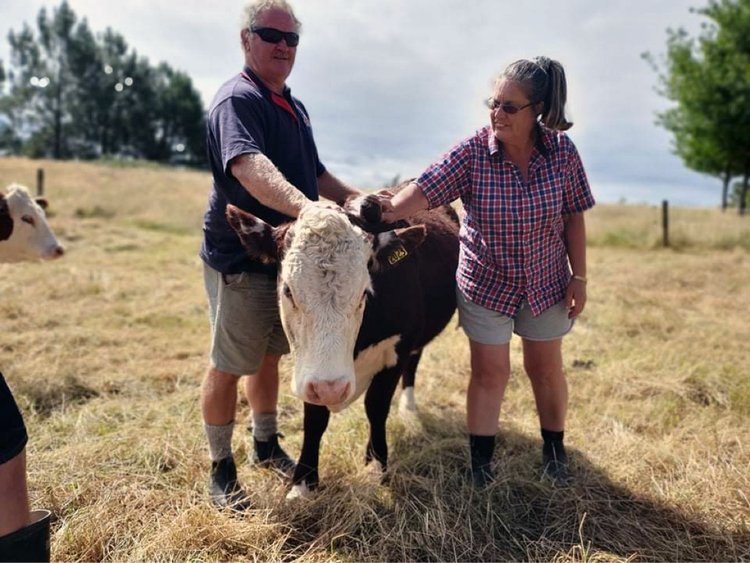
But it was clear he also had a good support system.
Bryce, who runs the farm with his wife Sue, said they “always work as a team”.
Sometimes he’d get a ride on the side-by-side farm vehicle, but quite often he was on his feet to shift stock, he said.
The race had “a nice camber” on it too – and Bryce said it was “a bit of an art” to keep yourself on top of it.
The Hootons had their “own little methods at work”, he said. For example, when he was putting up an electric fence – he said Sue would go ahead with the reel and he would be behind with the standards.
Bryce was 18-years-old, working as a dairy farmer, when he got hit by a stray bullet and lost sight in one eye.
“It was just a real freakish, severe accident,” he said. Ten months later, he was making silage when a bit of wire flew out of the harvester and “got me in the other eye”, he said.
But his loss of sight didn’t stop him.
He said the biggest thing was to take on little challenges, get good at them, and then move on to the next, rather than take on big challenges.
“Big ones will blow you away.”
One thing the Hootons poured 30 years into before working with herefords was beekeeping.
The couple, who owned Golden Flow Honey in Matamata, bought a block of land in Coroglen in 2015 with the intention of planting it all in Manuka for honey.
Manuka honey was “going ballistic” at the time, Bryce said.
“We ran 2000 hives and packed 100 tonnes of honey for overseas markets.”
But by the time Bryce turned 50, he’d “sort of had enough”, he said.
“The big boys were starting to buy little businesses up… so I found the opportunity to go.”
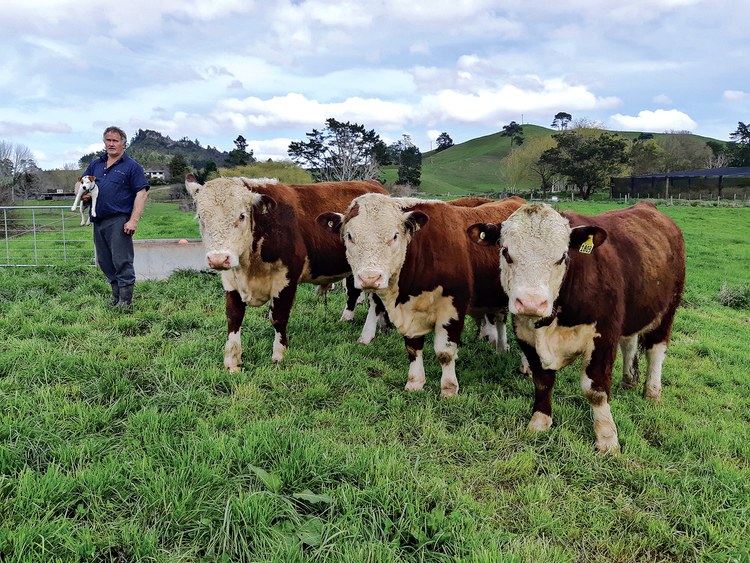
That’s when the Hootons came up with a new plan for the Coroglen land, “because you’ve got to do something”, Bryce said.
The couple turned their attention and efforts to a different sort of buzz: a cattle farm.
But Bryce said he didn’t want to run “just any old stock”.
“I wanted a bit of a challenge, a bit of meaning in it.”
The couple sold their honey business and shifted from Matamata to Cooks beach, near Coroglen, to kick start their new journey as hereford farmers.
Bryce heard herefords were a “really quiet breed” and easy to handle, he said.
“It’s not a big herd, you know.”
Farming 35 cows wasn’t the same as taking in 300 cows twice a day to milk, Bryce said.
“You sort of shift them and you walk around them and give them the odd pat, check their water and wander off.”
Bryce and Sue bought another block of land last year in Matarangi – which is where the herd and heifers lived, he said.
When the bulls were weaned in March, they were then shifted to Coroglen for the winter, he said, while the heifers stayed at Matarangi.
Even though Bryce was “a little bit hesitant” to begin with – it was evident the Hootons were passionate about their hereford journey.
“Both our hearts are right in it.”
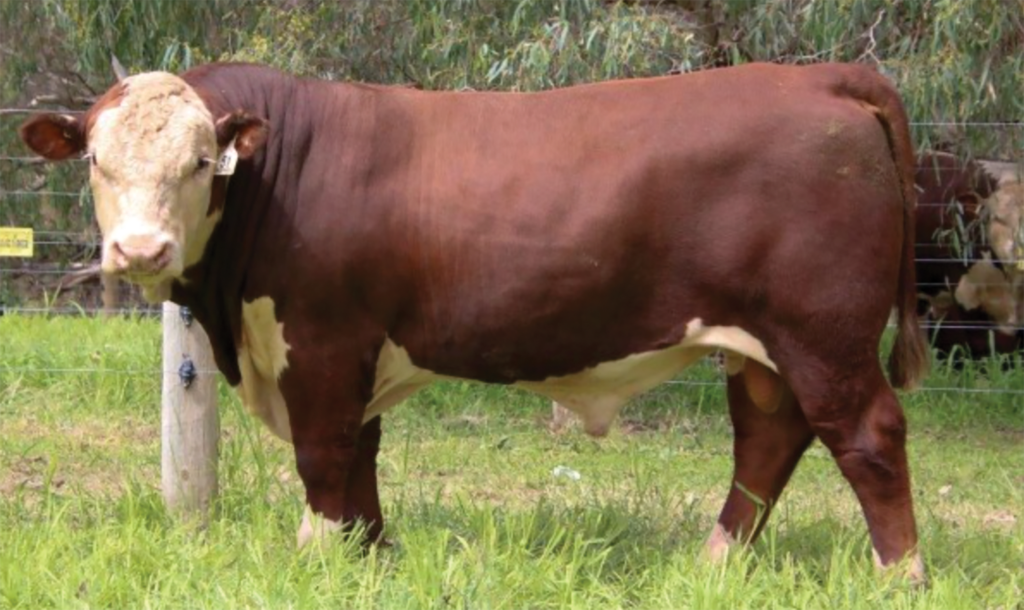
The most important thing Bryce had learnt so far was “breeding something that you can sell”.
“We’ve been pretty lucky,” he said. “We’ve sort of gone along with the AI [Artificial Insemination], so we import a lot of Australian semen.”
He called it “top-notch sort of stuff”, which came from an Australian hereford stud bull called Robert Redford.
“So the breeding’s worth something, that’s what I’ve sort of learnt.”
He said, just like dairy farmers and other breeders – the thing to look for was low birth weight, high growth rates and easy calving.
Those are the things Bryce said they were “focussed on” with their breeding programme.
“And it’s starting to show in our bull sales this year,” Bryce said.
“You know, you get $8000 for your top bull.”
Bryce said they had 10 bulls up for auction on August 31 and managed to sell them all.
“We average $4600, where a lot of other studs are sort of averaging, you know, $2700 [to] $3000.”
But out of the 10 bulls, five were sold to stud farms. “We’re really wrapped with that.”
Bryce said they had to be “pretty blooming good” to go to a stud farm. It was a real challenge for the Hootons, so they had a “really good bottle of wine” that night, he said.
Being able to sell yearling bulls is “a lot easier on us”, he said.

A lot of breeders kept their bulls for an extra year to sell as rising two-year-olds, he said.
“The yearlings really suit us… we don’t have to deal with these real big fellas.”
Bryce said yearling bulls could get quite big.
“They’re like 500kg when they leave our place. But they’re cruisy.
“We haven’t been threatened by them at all.”
One of the biggest things Bryce said he’d been challenged with was fat marbling throughout the meat.
“It seems to have been missed out on with a lot of their breeding.”
Restaurants and markets all around the world wanted marbling in their steak, Bryce said.
“You’ve got to have what the market wants. And that really starts with people like us.”
Bryce said they were targeting bulls with a lot of fat in their muscles.
“It’s quite an important thing,” but, “I can’t do it on my own”.
Bryce said as time went on – more and more people were starting to realise and bring it into their breeding programmes.
“If you get the premium product with all the right muscles and rump muscles, and all the eye [fillet steak] muscles and stuff like that right- then you’ve got something to sell.”
And it was the same when the Hootons were doing honey, he said.
“The whole world was screaming out for manuka honey – so we packed up our bees and went to manuka places and produced manuka honey.”
Even though bees and herefords are different – the principle is still the same.
“You’ve got to produce something what the market wants.”
DETAILS: To find out more about the Hootons and their hereford journey, visit hoobeesherefords.com.
